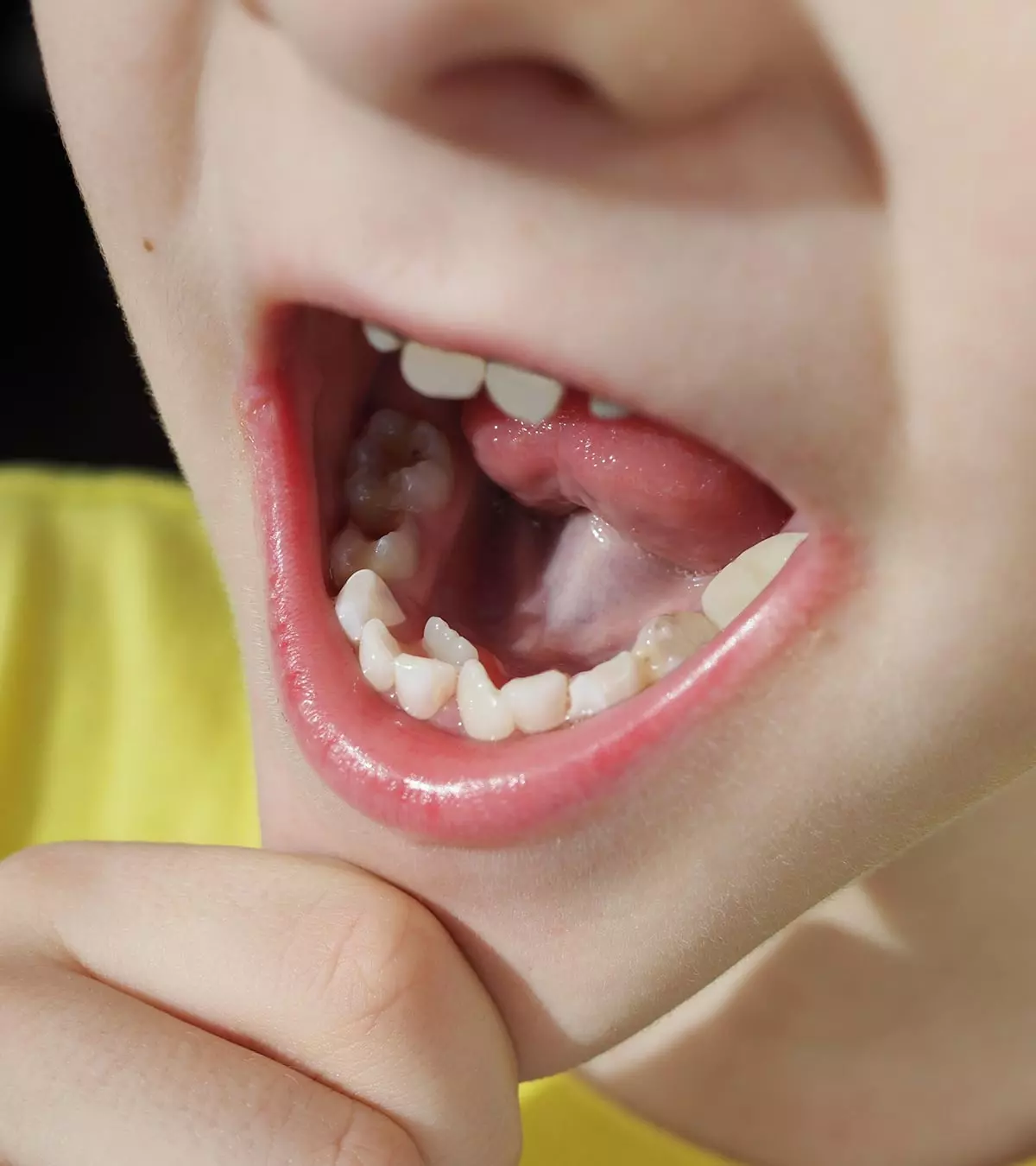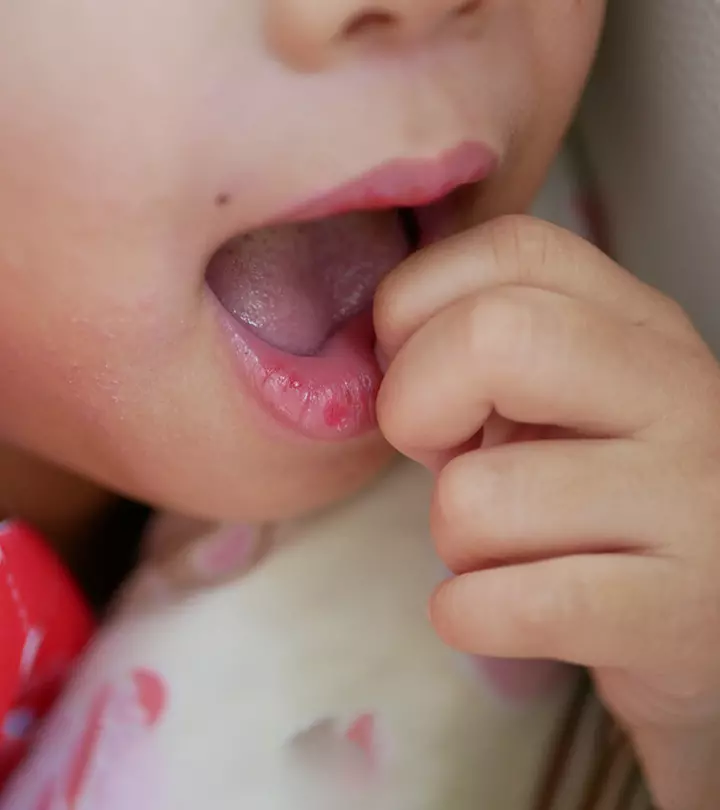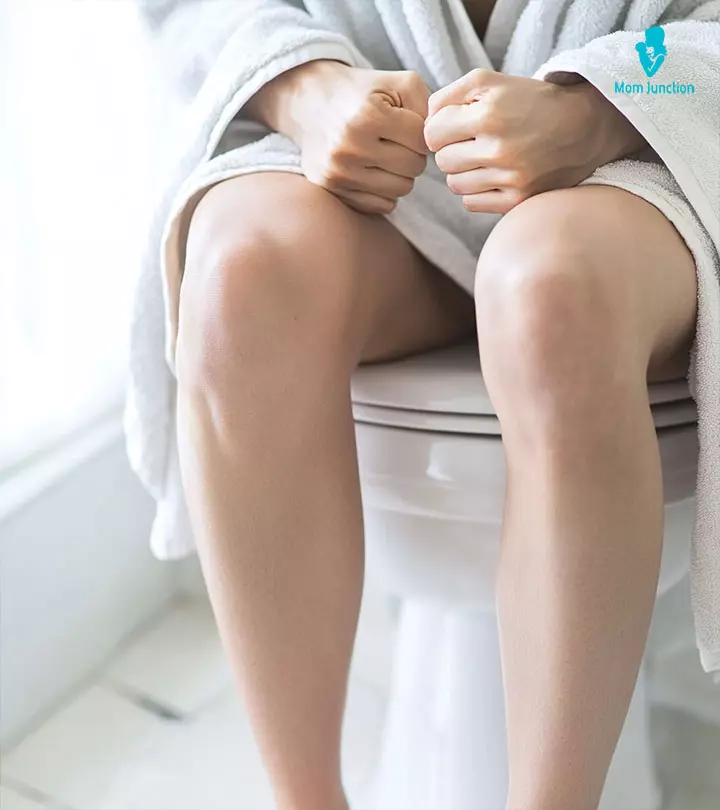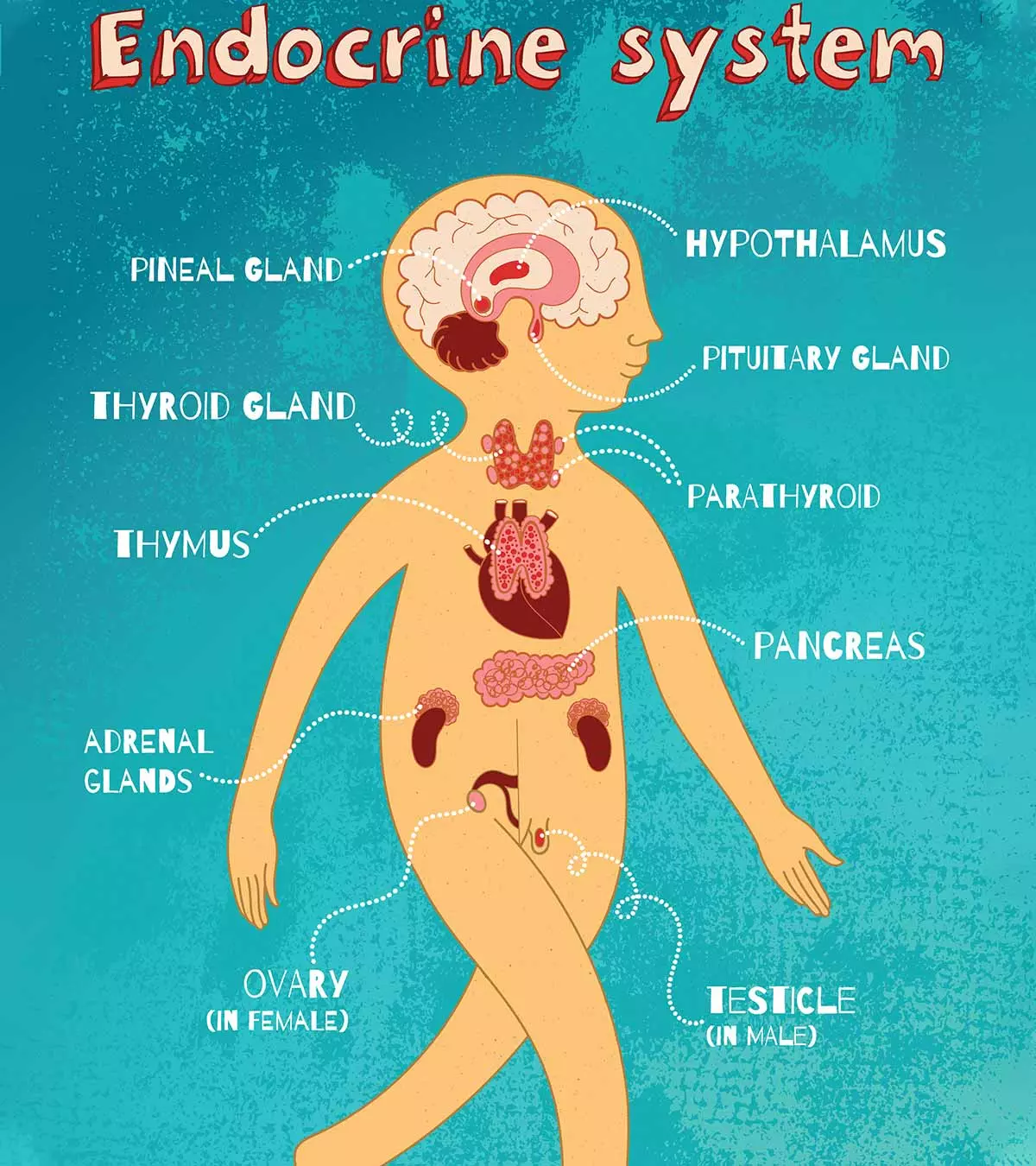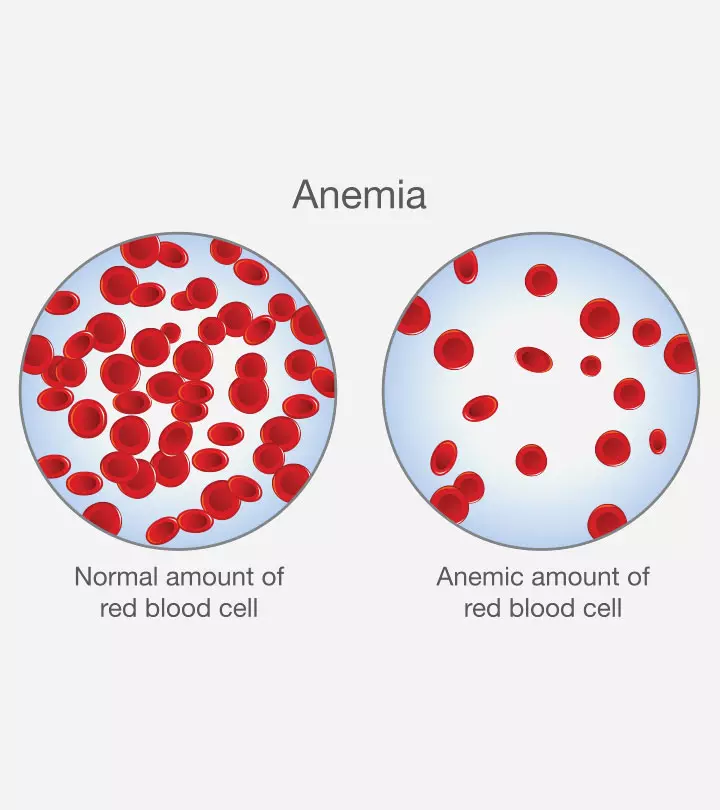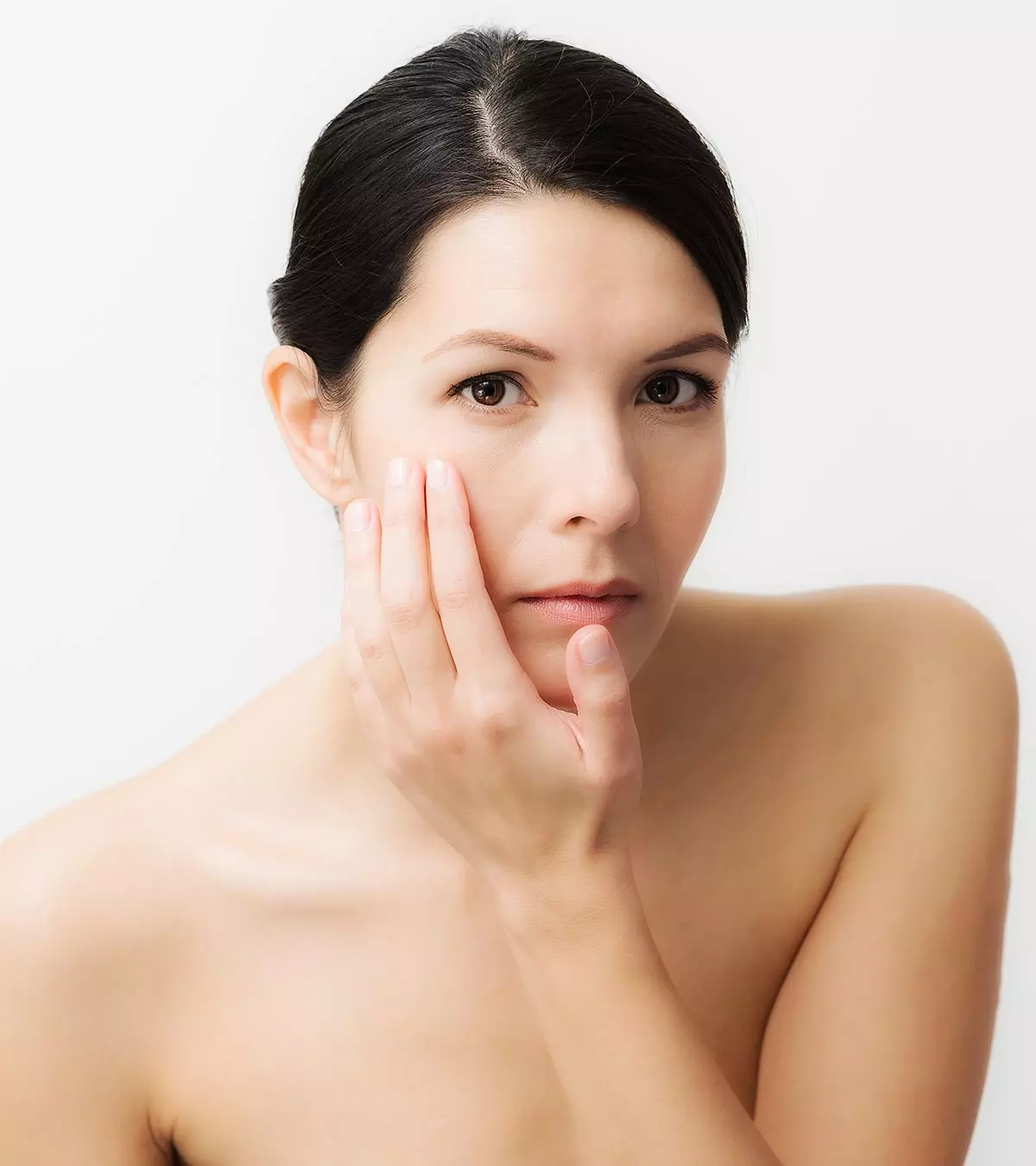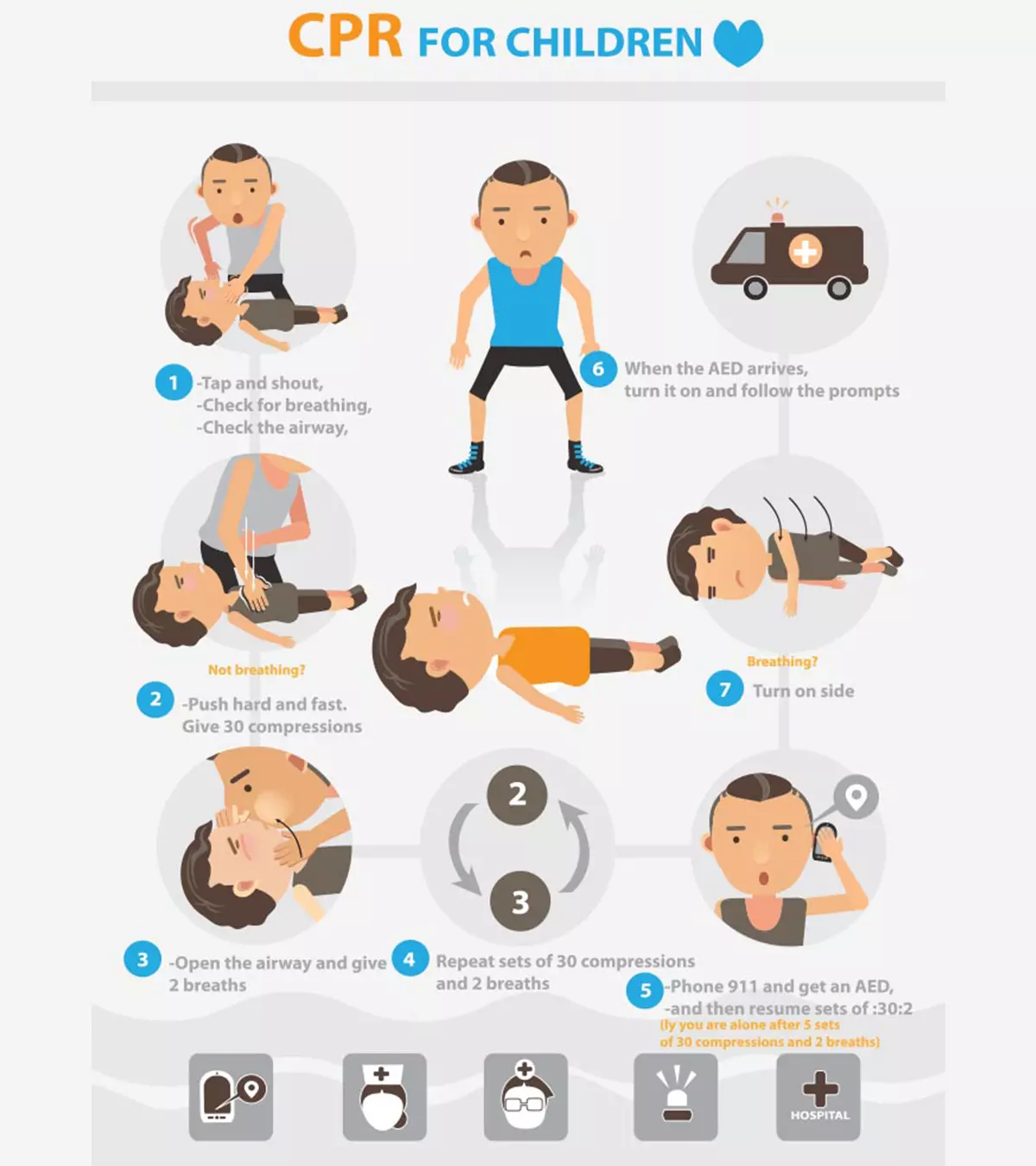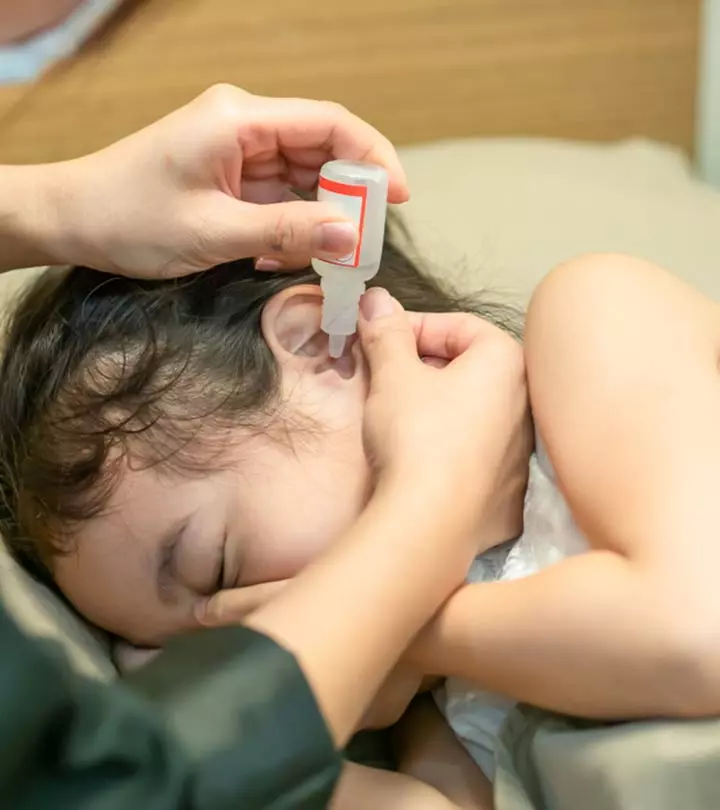
Image: Shutterstock

Ear wax in kids is a common occurrence. Ear wax, also known as cerumen, is a normal secretion and a part of the ears’ self-cleaning mechanism. It usually gets expelled from the ear through the jaw’s motions, such as chewing or talking. Nonetheless, if the wax gets clogged in the ear and causes build-up, it might eventually impair hearing abilities. This is known as impacted ear wax, and the process of this build-up is known as impaction. In case of a build-up, the child might complain of discomfort. The wax can be wiped off using a cloth or in a clinic.
Read about the importance of ear wax, symptoms of its impaction, risk factors, treatments, and home measures to remove ear wax in children.
Key Pointers
- An ear wax accumulation could cause pain, irritation, and itchiness in the ear.
- The build-up could increase due to using cotton swabs or the placement of objects in the ear canal.
- A doctor may conduct the irrigation technique, prescribe medications, or manually remove the plug.
- Consult your pediatrician to know the right techniques to remove earplugs at home.
- They may suggest ear wax softeners, baking soda solution, or ear canal flushing technique.
Why Do Ears Make Wax?

Image: Shutterstock
Ear wax (cerumen) is produced by the ear for cleaning and protecting itself (1). It is a thinly coated sticky, waterproof, and protective layer near the external opening of the ear canals. It comprises dead skin cells and hair along with the following three components (2) (3).
- Keratin: It is the predominant component of cerumen and acts as a protective barrier.
- Sweat: It is secreted by the modified sweat glands (ceruminous glands). These glands secrete a modified sweat that has bactericidal and fungicidal properties.
- Sebum: It is the oil produced by the sebaceous glands. The oil compromises fat molecules (lipids), which keep the ear canal lubricated.
Together, these three components of ear wax protect the ear canals from physical damage and microbial invasion. Along with the hair outside the ear canals, ear wax traps dust and other foreign particles that can damage ear structures, such as the eardrums.
 Did you know?
Did you know?What Are The Symptoms Of Ear Wax Build-up?
Ear wax build-up or impacted cerumen usually does not cause any discomfort and comes out on its own (4). However, in some cases, excess ear wax may cause ear canal blockage, mild hearing impairment, and various other ear-related symptoms, including (3):
- Ringing in the ear (tinnitus)
- Earache or pain in the ear (otalgia)
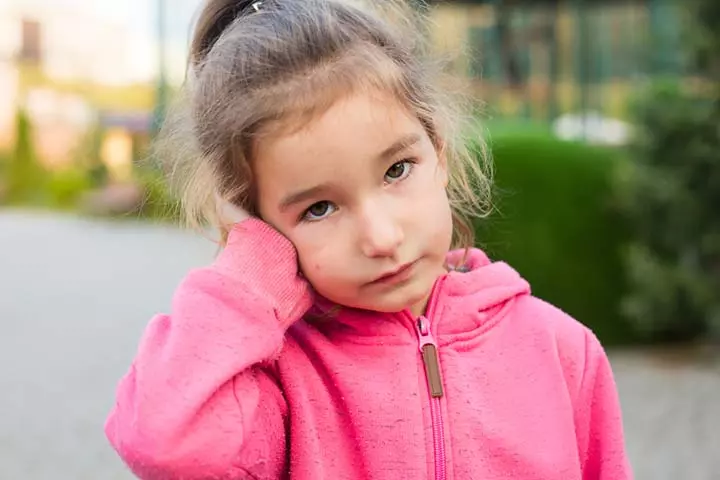
Image: Shutterstock
- Dizziness (vertigo)
- Irritation in the ear
- Foul smell from the ear canal
- Ear discharge
- Itchiness in the ear
- A sensation of fullness in the ear
What Are The Risk Factors For Ear Wax Build-up In Children?

Image: Shutterstock
Ear wax build-up or impacted cerumen can occur in any individual, regardless of age, gender, or clinical status. However, in a healthy population, it has been estimated that ear wax build-up is more common in the pediatric population (1 in 10 children) than in adults (1 in 20 adults).
The frequent incorrect use of cotton swabs or the insertion of other items for ear cleaning is the most common cause of impacted ear wax. Ear swabs and other items push the wax deeper, causing it to become impacted. Ear protection is necessary, and cotton swabs should never be used for children (5).
Dr. Rachel Dawkins, MD, Medical Director and Director of clinical experiences for physicians in training at Johns Hopkins All Children’s Hospital, says the following about cleaning a child’s ear with cotton swabs, “First I would say, don’t. If you feel the need to clean ears use the corner of a washcloth.”
Besides cotton swabs, the following factors may also increase the child’s risk of developing ear wax build-up (3).
- Use of earplugs, earbuds, and hearing aids
- Children with developmental delay
- Certain skin diseases, such as eczemaiA skin condition characterized by red, itchy, and dry patches in response to specific foods and medications
- Anatomical changes in the ear, such as stenosis (narrowing) or osteoma (benign bony growths in the external ear canals)
- Failed keratinocyte separation in the external ear canals as part of skin turnover
- Overgrowth of hair in the ear canals
When To See A Doctor?
You should consult a doctor if your child experiences the following conditions.
- Ear discharge
- Continuous pulling and tugging of the ear
- Impaired hearing
- Dizziness and ringing in the ear
- Earache due to otitis media
Untreated earwax buildup can increase the risk of infections, damage the eardrum, or lead to temporary hearing loss. To prevent these issues, seek medical advice when necessary. A doctor will check for the possible reasons for ear wax build-up, including the presence of underlying health conditions, causing excess ear wax formation, or its poor movement.
What Is The Treatment For Ear Wax Build-up?
The treatment will depend on the underlying cause of ear wax build-up and the extent of ear wax impaction.
You may be referred to an otorhinolaryngologist (ENT specialist) specializing in ear wax removal.
The doctor may consider any of the following treatments to remove excess ear wax (6).
- Irrigation or ear wax flushing: A mixture of slightly warm water, saline, and other wax-softening agents is poured into the ear canal through an ear syringe. The doctor may wait for a few minutes before sending a mild jet of saline solution to flush out the loosened ear wax.
- Manual removal: The doctor inserts an endoscope, a tube with a camera on its end, inside the ear canal to view it on a monitor. Specialized tools are then used to chip the impacted ear wax and suction it out gently.
- Medication: Recurrent impacted cerumen may require medication. The doctor may prescribe child-safe medicated ear drops for relief from ear wax build-up.
How To Remove Ear Wax At Home?
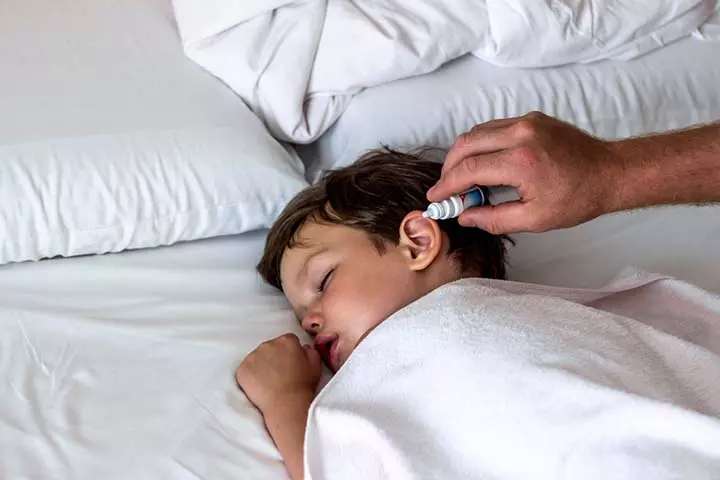
Image: Shutterstock
If your child is younger than six years, it’s important to prioritize their ear health and see a doctor for any ear wax build-up. You may consider the following home remedies for children older than six years (7). However, if you’re unsure about the age-appropriateness of an ear-cleaning method, consult a doctor before use.
- Child-safe ear wax softener ear drops: These drops are often hydrogen peroxide-based. Avoid those with carbamide peroxideiA common medicine used in softening and removing ear wax besides other purposes if your child is younger than 12 years since the compound could be unsafe for them (8). You may use the drops for four days or as directed on the packaging.
 Caution
Caution- Baking soda solution: You may make homemade baking soda ear drops by mixing a quarter teaspoon (1.25ml) of baking soda with two teaspoons (10ml) of water. Add five drops in the affected ear twice a day for four days.
- Ear canal flushing: You will need a bulb syringe, which you can purchase at a pharmacy. Suction some lukewarm water in the syringe and squirt it into the ear canal. Wait for a few seconds and then tilt the child’s head to let the water out. You may do this three to four times in one session. This needs to be done only following the advice of a doctor.
 Quick tip
Quick tipAvoid pouring oils or glycerine in your child’s ear since it may affect the eardrum or may cause irritation. Never try ear candling since it could increase the risk of burns (9). If your child has no relief from ear wax build-up for four days, consult a doctor for treatment. Maintaining good hygiene and ear care is essential to prevent ear infections.
Frequently Asked Questions
1. What color should children’s ear wax be?
New ear wax in children is golden-yellow, while older wax is brown or black (7).
2. How do I prevent excess ear wax production in my child?
Some tips to prevent excess ear wax production are (10):
- Avoid cleaning your children’s ears with cotton swabs or buds
- Don’t use hairpins or toothpicks to clean the ears, as they may scratch the ear canal, leading to infection
- Don’t use ear candles to clean the ears
- Limit the use of earplugs
- If your child complains of ear fullness or pain, contact a doctor
3. What are some common misconceptions about ear wax in children?
Some common misconceptions about ear wax in children are that the presence of ear wax means that your ears are dirty, ear wax buildup can lead to a permanent loss of hearing, you should remove excess ear wax with a cotton swab, and when there is a loud sound ear wax builds up to protect your eardrum (11).
The buildup of ear wax in ears may cause discomfort and earache in kids. However, using cotton swabs for cleaning ear wax in children is advised against as it might cause the wax to become impacted. Instead, you could use a washcloth or try these home remedies to ease pain and remove ear wax for kids older than six years. If your child is younger than six years old, taking them to the doctor is advised to remove the buildup. If your child complains of ringing in the ears or ear discharge, avoid delaying your doctor’s visit.
Infographic: How Does Earwax Color Relate To Health?
Accumulation of earwax is a normal phenomenon, and in most cases, it is not something to worry about. However, sometimes, the earwax changes its color and texture to indicate health conditions or infections. Through this infographic, let’s learn what the different colors of earwax indicate about children’s health.
Some thing wrong with infographic shortcode. please verify shortcode syntax
Illustration: Home Remedies To Remove Ear Wax In Kids

Image: Stable Diffusion/MomJunction Design Team
References
- Ksenia Aaron et al. Ear drops for the removal of ear wax.
https://www.ncbi.nlm.nih.gov/pmc/articles/PMC6492540/ - Tony Wright Ear wax.
https://www.ncbi.nlm.nih.gov/pmc/articles/PMC4356173/ - Earwax Buildup & Blockage.
https://my.clevelandclinic.org/health/diseases/14428-ear-wax-buildup–blockage - Ear wax.
https://raisingchildren.net.au/guides/a-z-health-reference/ear-wax - Using Cotton Swabs in Children’s Ears.
https://www.hopkinsmedicine.org/health/wellness-and-prevention/using-cotton-swabs-in-childrens-ears - Earwax (Cerumen Impaction).
https://med.uth.edu/orl/2025/01/09/earwax-cerumen-impaction/ - Earwax Buildup.
https://www.seattlechildrens.org/conditions/a-z/earwax-buildup/ - Carbamide peroxide (otic).
https://www.uofmhealth.org/health-library/d03990a1 - How to Safely Clean Your Child\’s Ears
https://www.choa.org/parent-resources/caring-for-your-kid-at-home/ear-cleaning-in-kids - Earwax Buildup.
https://www.healthychildren.org/English/tips-tools/symptom-checker/Pages/symptomviewer.aspx?symptom=Earwax+Buildup - 5 Common Myths About Earwax.
https://www.hasa.org/about/knowledge-base/
Community Experiences
Join the conversation and become a part of our nurturing community! Share your stories, experiences, and insights to connect with fellow parents.
Read full bio of Dr. Neema Shrestha
Read full bio of Reshmi Das
Read full bio of Dr. Ritika Shah
Read full bio of Dr. Joyani Das






